Healthy Bread Brands
This post may contain affiliate links. As an Amazon Associate, I earn from qualifying purchases. Please read my disclosure.There are so many varieties of bread lining supermarket shelves these days, it can be hard to figure out which is the best to buy. On top of that, many bread brands claim to be healthy but actually aren’t. I love bread, which is why I created this comprehensive guide to help you find the 13 healthiest bread brands at the grocery store, what to consider when buying bread, and what types of bread to avoid!
I’m a health coach and nutritionist, and I have taste-tested every single one of the brands I recommend, so you can be sure that these bread brands are not only good for you, but they taste great too!
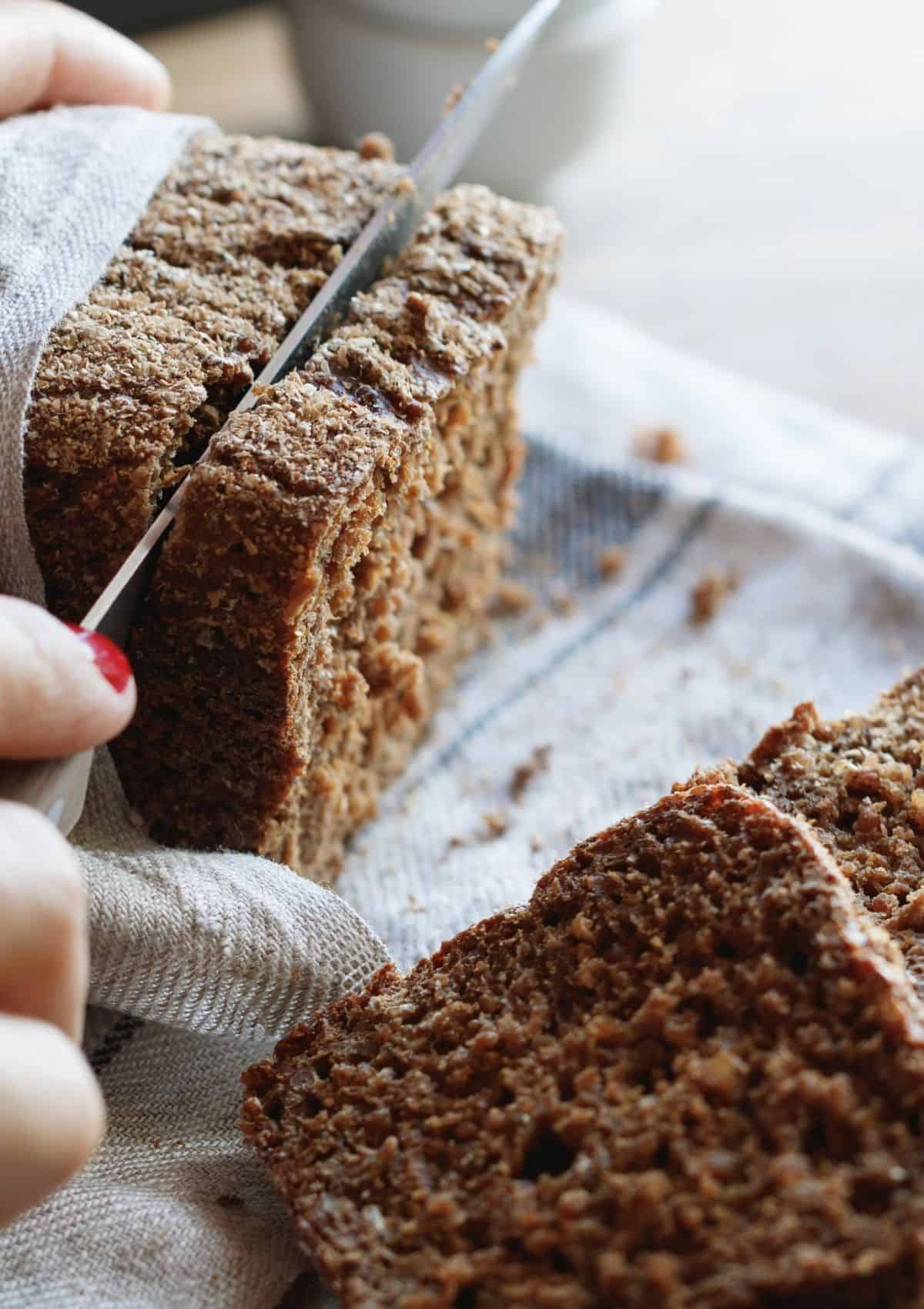
Most people assume that because I’m a nutritionist, that I don’t eat bread. So people are usually surprised when I say that bread is one of my favorite things to eat. I love the smell of fresh bread in the morning, whole grains, and all of the ways you can use bread in recipes.
Bread has gotten a really bad reputation because of various diet fads: no-carb, gluten-free, paleo, etc. It’s been vilified as the cause for everything from weight gain, to inflammation, to diabetes, to digestion issues and more.
The truth is, most bread is overly processed, high in sugar, and high in simple carbohydrates – which can cause a variety of health issues.
But there are types of bread that can actually be really good for you and won’t cause all of these problems! That’s what you’ll find in this post: how to find the healthiest bread, and how to avoid bread that looks healthy but actually isn’t!
How To Choose The Healthiest Bread
What To Look For
- Sprouted grains or whole wheat: Sprouted wheat or other whole grains are one of the first ingredients you should look for
- Less than 2 grams of sugar per slice: No added sugar, no added sweeteners on the ingredients list
- No high-fructose corn syrup
- At least 2 grams of fiber per serving
- Around 100 calories per slice
- All natural ingredients are key when making bread without preservatives: The easiest way to determine this is to make sure the ingredients list only has simple ingredients that you can pronounce. If you can’t pronounce it, it is likely a preservative or stabilizer that is not necessary in bread
- Healthy fats: Such as olive oil, or avocado oil, or seeds like flax or chia
- Organic and/or Non-GMO: If available, always choose organic
Ingredient List To AVOID When Buying Bread
- Anything with “enriched,” “bleached,” or “unbleached” as part of the first ingredient: “Enriched wheat” essentially means “white flour”. Be wary of “wheat” or even “100% whole wheat” — some breads will have this as an ingredient but aren’t truly made with whole-grain flour, and are still highly processed and refined.
- Anything with less than 2 grams of fiber per serving
- Anything with raisins, dried fruits, cinnamon, banana, honey, or vanilla listed on the packaging
- Dough conditioners (like azodicarbonamide, DATEM, monoglycerides, diglycerides, sodium stearoyl lactylate): these are just chemicals added to the bread to make the bread making process faster and scalable to big batches. They’re not necessary for real bread, and if these ingredients are on the label, it’s a good sign that the bread isn’t truly healthy.
- GMO ingredients like soybean oil and corn oil
- Preservatives (like calcium propionate) or stabilizers like maltodextrin: bread isn’t supposed to be able to last on the counter for 1-2 weeks without getting hard and moldy. If you see any ingredients you can’t pronounce, it’s likely a preservative so put the bread down and find another option.
- Added sugar: If your bread has yeast, it will likely have a tiny bit of honey or sugar because you need sugar to activate yeast. That being said, anything over 2 grams per slice is unnecessary. Watch out for high fructose corn syrup, any kind of syrup or artificial sweeteners added to bread. This is especially true for light breads.
- Artificial flavors and coloring: Caramel coloring is often added to fake “wheat” breads to make them seem more brown. If you see this on the label, avoid that bread!
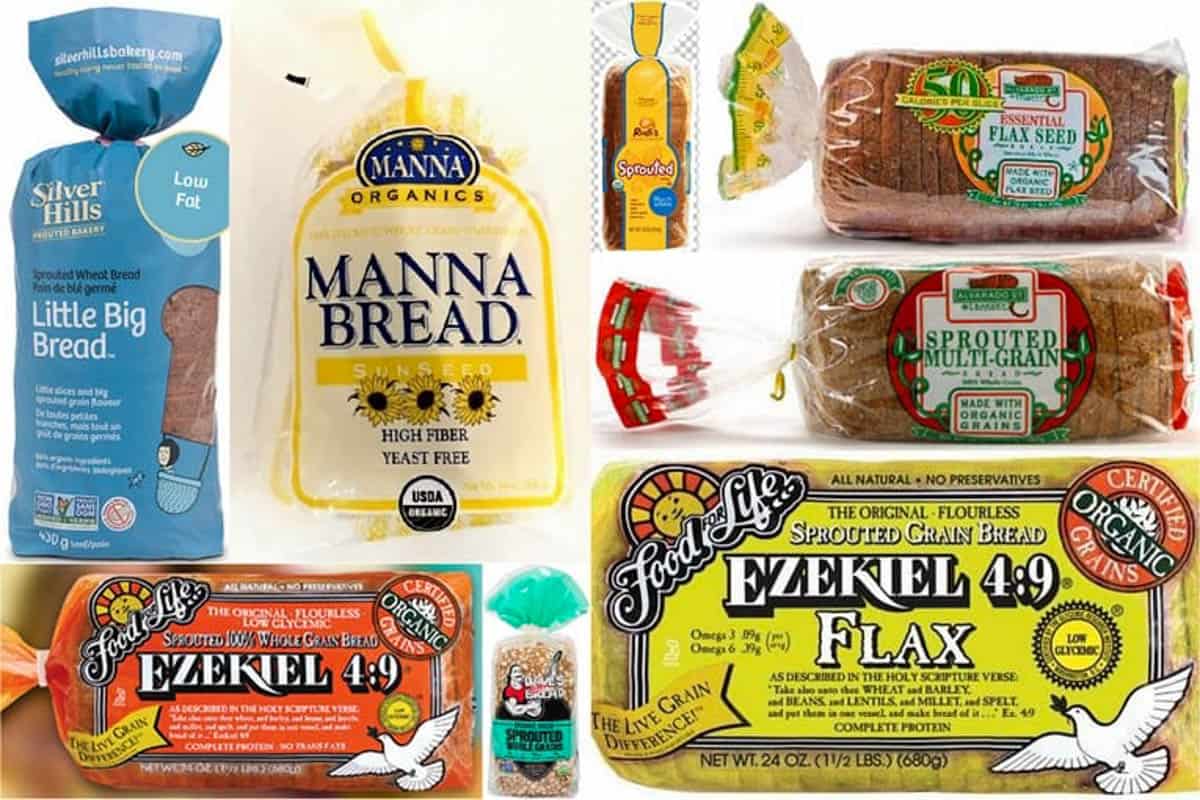
Top 13 Healthiest Bread Brands
My personal favorite type of bread is sprouted wheat bread, which is available in most health food stores and conventional grocery stores in the freezer section. But there are other great options too – so you should be able to find at least one of the loaves of bread in my list below at your local grocery store!
Ezekiel 4:9 Sprouted Grain Bread (All Varieties)
I absolutely love the entire line of Ezekiel sprouted wheat breads. They come in lots of different varieties, and they are all super healthy and taste great!
Not only are their breads are made with USDA Organic and Non-GMO ingredients, but they’re completely flourless and made from sprouted wheat, barley, millet, spelt, soybeans, and lentils. The sprouting process boosts nutrient absorption and makes the grains easier to digest, while reducing anti-nutrients like phytic acid. It also happens to be a source of complete plant-based protein and contains all 9 essential amino acids!
It’s completely sugar free, glyphosate free, has no preservatives or artificial ingredients, and is high in fiber and protein. I love to enjoy this bread toasted, and I find that it has a really nice nutty flavor and works well as toast or when making a hearty sandwich loaded with my favorite toppings.
Ingredients: Organic Sprouted Wheat, Filtered Water, Organic Sprouted Barley, Organic Sprouted Millet, Organic Malted Barley, Organic Sprouted Lentils, Organic Sprouted Soybeans, Organic Sprouted Spelt, Fresh Yeast, Organic Wheat Gluten, Sea Salt
Nutrition per one slice (34 grams): 80 calories, 3 grams of fiber, 0 grams sugar, 5 grams protein
Price: (Varies) $7.53 when purchased online at Walmart, $7.99 at Thrive Market, but varies depending on the grocery store.
Pros
Cons
Dave’s Killer Bread (Good Seed or Power Seed Varieties)
Dave’s Killer Bread has quite a few different bread options, and most are healthy (but watch out for some of the varieties that have more than 2 grams of added sugar per slice). My two favorites are the Good Seed or Powerseed varieties.
I’ve found that Dave’s Killer Bread is the perfect healthy bread for picky eaters, kids, or anyone who is trying to transition from a less-healthy-bread to a healthier option. It has a super soft, fluffy texture, tastes great toasted or un-toasted, and even their white bread is more nutritious than a traditional white bread!
Their breads are organic, non-GMO, have no high fructose corn syrup, and no artificial ingredients or preservatives. I recommend any of their sprouted breads that have less than 2 grams of sugar per serving. Some of their varieties are also low in calories and have only about 60 calories per slice.
Ingredients For Good Seed Thin Sliced: Organic whole wheat (organic whole wheat flour, organic cracked whole wheat), water, organic good seed® grain and seed mix (organic whole flax seeds, organic sunflower seeds, organic tri-color quinoa [organic black quinoa, organic red quinoa, organic white quinoa], organic steel cut oats, organic ground whole flax seeds), organic cane sugar, organic wheat gluten, organic oat fiber, contains 2% or less of each of the following: organic molasses, sea salt, yeast, organic vinegar, organic cultured wheat flour, enzymes, organic acerola cherry powder.
Nutrition per one slice: (Varies)
- Good Seed Thin Sliced: 1 slice (28 grams) 70 calories, 3 grams fiber, 2 grams sugar, 4 grams protein
- Powerseed Thin Sliced: 1 slice (28 grams) 60 calories, 3 grams fiber, 2 grams sugar, 4 grams protein
Price: (Varies):
- Good Seed Thin Sliced – $4.58 on Amazon Fresh, $5.47 at Walmart, also found at most grocery stores
- Powerseed Thin Sliced – $4.38 on Amazon Fresh, $5.47 at Walmart, also found at most grocery stores
Pros
Cons
Silver Hills Sprouted Bakery Little Big Bread
Silver Hills is another sprouted bread brand I’ve tried and enjoyed in the past, but I’ve found that it’s not always as easy to find as some of the other brands listed above (like Ezekiel or Dave’s Killer Bread).
But if you can find Silver Hills, I would still recommend it as it’s a lower-calorie bread, with only about 60 calories per slice, but is still high in fiber and protein and has a hearty texture. While it’s not 100% organic, many ingredients are organic and all ingredients are non-GMO. It also has a soft texture and nutty flavor, making it versatile for everything from sandwiches to toast.
Ingredients: Organic sprouted grains (whole grain wheat, whole grain oats), Water, Vital wheat gluten, Sugars (organic cane sugar and/or organic oat syrup), Yeast, Cultured wheat flour, Sea salt, Sesame Flour, Enzymes, Ascorbic Acid
Nutrition per one slice (21.5 grams): 50 calories, 2.5 grams fiber, 1 gram sugar, 3.5 grams protein
Price: (Varies) $5.89 at Target, also found in many grocery stores
Pros
Cons
Simple Truth Organic® Sprouted Grain & Legume Bread
I was so happy and surprised when I found this super healthy, organic, sprouted grain bread at Kroger for only $3.99! Made with super clean ingredients, I’ve found this bread to be comparable to Ezekiel bread but at half the cost.
It’s soft and has a great texture – and works well toasted or untoasted in a variety of dishes. I’ve even made French toast out of these and it’s tasted great.
The only downside is that if you don’t have a Kroger or Fred Meyer near you, you likely won’t be able to find this bread.
Ingredients: Organic Sprouted Whole Wheat, Organic Sprouted Grain Blend (Organic Sprouted Whole Millet, Organic Sprouted Whole Barley Flour, Organic Sprouted Whole Garbanzo Bean Flour, Organic Sprouted Whole Spelt Flour, Organic Sprouted Whole Lentil Flour), Organic Raisins, Water, Organic Vital Wheat Gluten, Cultured Wheat Flour, Yeast, Sea Salt.
Nutrition per one slice (34 grams): 90 calories, 4 grams fiber, 1 gram sugar, 5 grams protein
Price: (Varies) $3.99 at Instacart, found at Kroger, and Fred Meyer.
Pros
Cons
Alvarado Street Bakery Sprouted Whole Wheat Bread
Alvarado Street Bakery makes a variety of sprouted wheat bread options and they are all great! I personally buy the Thin-Sliced Sprouted Whole Wheat bread, but any of them would work well. Their bread is USDA Organic certified, non-GMO and many are added-sugar-free!
In general, I prefer their thin-sliced varieties to their regular varieties because the thin sliced versions are lower in calories and organic-certified (even though the regular varieties also use organic ingredients, they are non-GMO certified but not organic certified).
I’ve found their breads to have a super soft texture and nutty flavor, pretty comparable to Ezekiel. They are also on the more affordable side when it comes to organic sprouted bread.
Ingredients: Sprouted Organic Whole Wheat Berries, Filtered Water, Organic Whole Wheat Flour, Organic Dates, Wheat Gluten, Organic Sunflower Oil, Yeast, Cultured Wheat Starch, Organic Cane Sugar, Organic Raisins, Sea Salt, Organic Vinegar, Organic Unbleached Wheat Flour, Enzymes, Ascorbic Acid.
Nutrition per one slice (38 grams): 100 calories, 2 grams fiber, 3 grams sugar (1 gram added sugar), 5 grams protein
Price: (Varies) $5.69 at Instacart, found in some grocery stores as well.
Pros
Cons
Base Culture Sourdough Bread
Base Culture is another bread brand that has quite a few options, and I love all of them! But I especially enjoy their sourdough bread because it’s so hard to find a good gluten-free sourdough bread that doesn’t taste gluten-free. Base Culture Sourdough Bread is the best grain-free, gluten-free bread that comes close to traditional sourdough in taste and texture.
It’s made with simple, clean ingredients like almond flour, arrowroot flour, and apple cider vinegar, and it happens to be both paleo and keto-friendly too. I’ve found that this bread has a soft texture but is more dense than traditional sourdough so that’s just something to keep in mind.
Ingredients: Water, Eggs, Cashew Butter, Sauerkraut, Arrowroot Flour, Golden Flaxseed meal, Almond Flour, Psyllium Husk Powder, Apple Cider Vinegar, Coconut Oil, Lemon Juice, Honey, Sea Salt, Xanthan Gum, Baking Soda, Lactic Acid
Nutrition per one slice (32 grams): 100 calories, 3 grams fiber, 0 grams sugar, 3 grams protein
Price: (Varies) $9.99 at Thrive Market, also available at some grocery stores.
Pros
Cons
Happy Campers Gluten Free Bread
Made with a mix of gluten-free flours, this bread is organic, non-GMO, high in protein, high in fiber and gluten free. They come in a bunch of different flavors, and all of them are healthy and taste great.
I would recommend toasting this bread before using it, as the texture doesn’t hold up if it’s not toasted. But when I’ve toasted it, it has a slightly crispy texture and nutty flavor which I’ve enjoyed.
Ingredients: Filtered Water, Flour Mix* (Whole Grain Millet*, Whole Grain Sorghum*, Whole Grain Buckwheat*, Whole Grain Quinoa*, Whole Grain Amaranth*), Tapioca Flour*, High Oleic Expeller Pressed Sunflower Oil* and/or Sustainable Palm Oil*, Prebiotic from Tapioca Starch*, Hemp Seeds*, Pea Protein*, Millet Seeds*, Apple Cider Vinegar*, Psyllium Husk*, Acacia*, Yeast, Xanthan Gum, Salt, Rowan Berry Fruit Extract *ORGANIC
Nutrition per one slice (37 grams): 90 calories, 3.5 grams fiber, 0 grams sugar, 2.5 grams protein
Price: (Varies) $7.69 at Instacart, also found at many grocery stores in the frozen section.
Pros
Cons
Mestemacher Whole Rye Bread
I know, rye bread isn’t for everyone, but if you are a fan of rye bread – this is my absolute favorite brand! It literally only has 6 ingredients – it doesn’t get any more clean or simple than that. And each slice is packed with fiber and protein, guaranteed to keep you full for a long time.
I like this bread toasted or un-toasted, as it has a dense, chewy texture that works well for sandwiches, toast, and more — and its authentic flavor makes it perfect for German-style recipes.
The coolest thing about this bread that I’ve found is that it’s shelf-stable without any preservatives! That’s because it’s vacuum-sealed, so the freshness of this bread is guaranteed 12 months from production!
Ingredients: Whole kernel rye, water, wholemeal rye flour, salt, oat fiber, yeast.
Nutrition per one slice (72 grams): 180 calories, 8g fiber, 2g total sugar, 0g added sugar, 4g protein
Price: (Varies) $4.99 on Amazon, also found in most grocery stores.
Pros
Cons
Trader Joe’s Sprouted Wheat Multigrain Bread
I love Trader Joe’s Sprouted Breads – they have a few different varieties and I would recommend all of them except for their cinnamon raisin bread because that one is too high in sugar.
But the one I buy the most often is their sprouted wheat multigrain bread. They have an organic version and a non-organic version – I’ll typically buy the organic version unless it’s sold out.
This brand is also very comparable to the Ezekiel bread or the Simple Truth bread, and also happens to be very affordable too!
Ingredients: Organic sprouted wheat berries, water, wheat gluten, organic grain mixture (organic millet, organic yellow cornmeal, organic cracked wheat, organic rye flakes, organic rolled oats, organic flax seeds, organic sunflower seeds), molasses, cultured wheat starch (to preserve), yeast, ascorbic acid (to preserve), sunflower lecithin.
Nutrition per one slice (34 grams): 90 calories, 2 grams fiber, 2 grams total sugar (1 gram added sugar), 6 grams protein
Price: Typically around $4 for a loaf, found only at Trader Joe’s.
Pros
Cons
Little Northern Bakehouse Gluten Free Bread
I love this gluten free bread!! It has a super soft texture and also tastes great toasted, while still having more all natural ingredients and less processed ingredients than most gluten-free bread brands.
Not only is this bread gluten-free, it’s also free from dairy, eggs, and other common allergens. It comes in quite a few different varieties including Seeds & Grains, Millet & Chia, Sprouted 7 Grain and more. All of their breads are non-GMO project verified and non-glyphosate verified too.
Ingredients: Water, Gluten-free flour blend (modified tapioca starch, potato starch, corn starch, brown rice flour), Seed and grain mix (sunflower seeds, whole millet, flax seeds, chia seeds, pumpkin seeds), Sugars (dextrose, cane sugar), Sunflower oil, Psyllium husk, Yeast, Pea hull fibre, Modified cellulose, Vinegar, Salt, Rice bran, Cellulose gum, Cultured cane sugar, Enzymes.
Nutrition per one slice (30 grams): 90 calories, 2 grams fiber, 2 grams sugar, 1 gram protein
Price: (Varies) $11.99 at Amazon, also found in many grocery stores.
Pros
Cons
Manna Bread
All of Manna Breads are USDA organic certified, which I really appreciate. They also have a large variety of bread options – I recommend the Sunseed, Multigrain, Millet Rice, or Whole Rye Bread which are the lowest in sugar compared to some of their fruit-forward varieties.
Their breads are made from sprouted whole grains and are baked at a temperature much lower than conventional bread. It has kind of a cake-like texture, and is a little more moist than regular bread. I’ve found that it tastes best toasted, with butter, nut butter or fruit spreads, or with soups, on salads etc.
Ingredients: Sprouted organic wheat kernels, filtered water, organic brown rice, organic barley, organic millet, organic flax seeds, organic rye kernels, organic soy beans, organic rolled oats, organic oat bran, organic cornmeal.
Nutrition per one slice (25 grams): 65 calories, 2.5 grams fiber, 0 grams sugar, 3 grams protein
Price: (Varies) $4.89 at Instacart, $4.79 on Manna’s website.
Pros
Cons
Superfree Bakehouse Bread
Superfree bakehouse makes the most allergen-friendly bread I’ve found, and still manages to taste good! Their products are handmade from scratch, vegan, gluten-free, dairy-free, egg-free, soy-free, corn-free, rice-free, potato-free, coconut-free, and sesame-free. They also ensure that their entire manufacturing facility has no nuts (so no cross-contamination).
You’ll only find about 8 ingredients in their bread, with no preservatives or anything artificial! Their classic white loaf is my favorite but any of their varieties taste great. Great for sandwiches, toast, and whatever else your bread needs are!
Ingredients: Water, sorghum flour, tapioca starch, sugar, xanthan gum, safflower oil, yeast, salt.
Nutrition per one slice (40 grams): 80 calories, 2 grams fiber, 2 grams sugar, 2 grams protein.
Price: (Varies) $7.49 at Instacart, also found in some grocery stores and online on Superfree’s website.
Pros
Cons
Essential Baking Company Organic Bread
The Essential Baking Company specializes in organic, artisan breads, and have super high quality ingredients!
I’ve always enjoyed all of their bread varieties – such as sourdough, multigrain, and rye, and I’ve appreciated their Take & Bake line because then I can actually bake their bread fresh at home in just about 15 minutes (and the partially baked breads have a longer shelf life until you actually bake them!)
While they’re located in Seattle, you can find their Take & Bake breads at grocery stores nationwide.
Ingredients for the multigrain bread: Organic unbleached wheat flour, water, organic whole wheat flour, organic sugar, organic sunflower seeds, organic wheat bulgur, organic rolled oats, organic oat groats, organic barley flakes, sea salt, organic polenta, organic poppy seeds, organic wheat berries, organic millet, organic wheat bran, yeast.
Nutrition per one slice (multigrain variety, 43 grams): 110 calories, 2 grams fiber, 2 grams sugar, 3 grams protein.
Price: (Varies) $5.69 at Instacart, $5.49 at Thrive Market, found at Whole Foods, Safeway and many other grocery stores.
Pros
Cons
The Worst Popular Bread Brands To Buy
The bread brands I’ve listed above are all great options and are healthy for you! But what I’ve noticed is at the grocery store, there can be 50 different types of bread to choose from, and most of them look healthy but actually aren’t!
Here are some popular bread brands that seem healthy, with labels like “whole wheat” and “whole grain” – but they actually are not good for you at all. See below for why I wouldn’t recommend any of these brands.
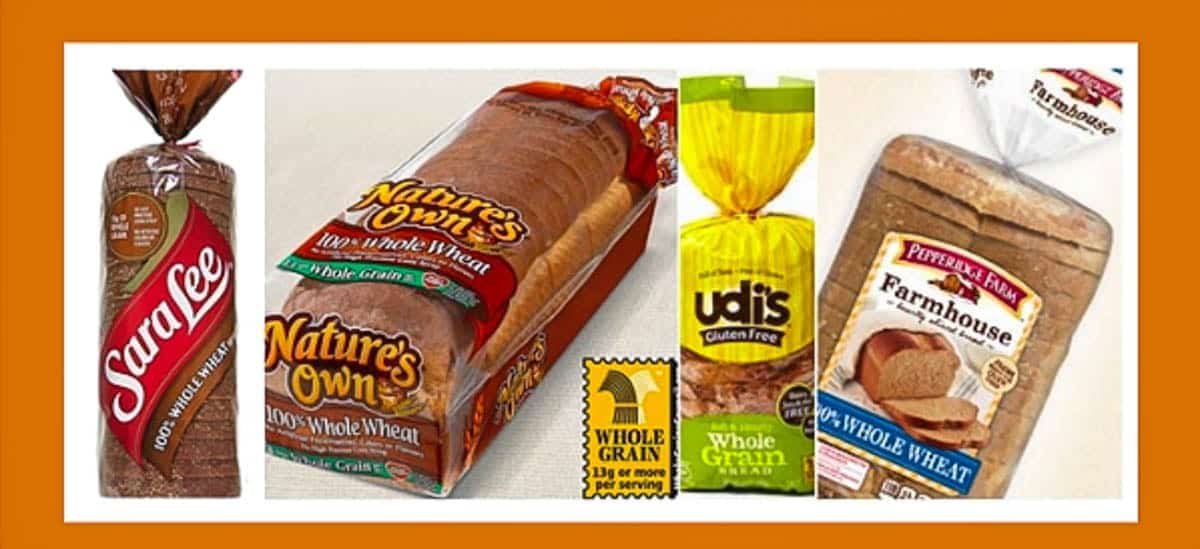
When you look closely at the ingredients lists for many popular bread brands, you’ll notice a surprising number of processed ingredients, added sugar, and refined grains. These extra additives take away from the healthiness of the bread. That’s why I always recommend choosing bread without preservatives, it’s fresher, cleaner, and better for you! Avoid brands with overly long ingredient lists and stick to simpler, natural options.
Ingredients Lists For Popular Bread Brands
I have bolded the ingredients that are ultra-processed and should be avoided when buying bread – and as you’ll notice, none of the bolded ingredients below are in any of the healthy breads I recommend in my list above, which means that they really aren’t necessary in order to make delicious bread!
Sara Lee Classic 100% Whole Wheat Bread
Ingredients List: Whole wheat flour, water, wheat gluten, sugar, yeast, soybean oil, salt, molasses, wheat bran, calcium propionate (preservative), datem, monoglycerides, calcium sulfate, cellulose gum, monocalcium phosphate, cornstarch, soy lecithin, citric acid, grain vinegar, potassium iodate.
Ingredients To Avoid
- Calcium propionate is a preservative used to extend shelf life
- DATEM is an emulsifier used to extend shelf life and improve texture
- Monoglycerides improves fluffiness of bread and shelf life
- Cellulose gum keeps the bread soft and extends shelf life
- Soy lecithin acts as an emulsifier, improves the dough’s stability
Pepperidge Farm 100% Whole Wheat Bread
Ingredients List: Whole Wheat Flour, Water, Wheat Berries, Wheat Gluten, Sugar, Yeast, Sugarcane Fiber, Honey, Unsulphured Molasses, Contains 2 Percent or Less of: Soybean Oil, Wheat, Nonfat Milk (Adds a Trivial Amount of Cholesterol), Lower Sodium Natural Sea Salt, Calcium Propionate and Sorbic Acid to Retard Spoilage, Salt, Distilled Monoglycerides, DATEM (Dough Conditioner), Chicory Root Fiber, Soy Lecithin.
Ingredients To Avoid
- Sugarcane Fiber, Honey, Unsulphured Molasses: A little bit of sugar is ok in bread, since you need it to activate the yeast, but this bread has FOUR different types of sugar listed! That’s way too much.
- Calcium propionate is a preservative used to extend shelf life
- DATEM is an emulsifier used to extend shelf life and improve texture
- Monoglycerides improves fluffiness of bread and shelf life
- Soy lecithin acts as an emulsifier, improves the dough’s stability
Nature’s Own 100% Whole Wheat Bread
Ingredients List: Stone ground whole wheat flour, water, yeast, brown sugar, wheat gluten, contains 2% or less of each of the following: salt, dough conditioners (contains one or more of the following: sodium stearoyl lactylate, calcium stearoyl lactylate, monoglycerides, mono- and diglycerides, distilled monoglycerides, calcium peroxide, calcium iodate, datem, ethoxylated mono- and diglycerides, enzymes, ascorbic acid), soybean oil, vinegar, cultured wheat flour, monocalcium phosphate, ammonium sulfate, citric acid, sodium citrate, soy lecithin, natamycin (to retard spoilage).
Ingredients To Avoid
- Dough conditioners: None of these dough conditioners listed in Nature’s Own ingredients are necessary to make bread! They’re used to improve the texture of the bread and extend its shelf life.
- Ammonium sulfate: Another processed ingredient, used to improve the bread’s texture
- Soy lecithin acts as an emulsifier, improves the dough’s stability
- Natamycin is added to the surface of bread to prevent mold growth and extend its shelf life
Udi’s Gluten Free Whole Grain Bread
Ingredients List: Udi’s Best Blend (Tapioca & Potato Starch, Brown Rice & Teff Flour, Modified Tapioca Starch), Water, Non-GMO Vegetable Oil (Canola or Sunflower or Safflower), Egg Whites, Evaporated Cane Juice, Tapioca Maltodextrin, Tapioca Syrup, Yeast, Flax Seed, Xanthan Gum, Salt, Baking Powder, Cultured Corn Syrup Solids (Natural Mold Inhibitor), Dry Molasses, Enzymes
Ingredients To Avoid
Since Udi is a gluten-free bread, it has to add more ingredients in to mimic the texture of regular bread. In general, none of Udi’s ingredients are super problematic, my main issue with it is that none of them are really whole food based, and many of these starches are more refined than other starch options used in the gluten-free bread brands I recommend above.
FAQs
Sprouted grains are actually, technically, vegetables or legumes. To begin the sprouting process, you soak the entire grain in water until it begins to sprout into a little plant. These sprouts are then ground up to make bread. Also, when grains are sprouted, starches and proteins are converted into smaller molecules that are easier to digest.
That means sprouted bread offers more key nutrients like essential amino acids, iron, minerals, and B vitamins than standard whole-grain or even 100% whole wheat varieties. Sprouting grains also decreases their carb content, which means that sprouted breads can help with blood sugar control.
They can also be a good source of protein – one slice of bread can contain up to 5 grams of protein! My two personal favorite sprouted grain loaves of bread are the Ezekiel Bread – 4:9 Sprouted Flax Bread, and the Silver Hills Bakery Little Big Bread. There are no-preservatives in these loaves of bread, so I freeze them and take out slices as I need them.
Wheat grains, used to make bread, are made up of 3 parts: the germ, endosperm, and bran. The bran is the outer layer of the grain, and it’s where most of the nutrients are!
The bran and germ together contain protein, vitamins, minerals and fiber. The endosperm, on the other hand, is basically refined starch. White bread is made up of grains where the bran and germ are removed, so it’s just the refined starch part of the grain. That’s why whole grains and whole wheat are higher in fiber and nutrients than white grains, because processed white grains have removed the bran and germ.
Eating white bread, white crackers, white pasta, white rice (anything with white flour) are simple carbohydrates, not complex carbohydrates, which makes them less nutrient dense than whole grains.
Sourdough is healthier than white bread. It is made through a fermentation process which uses both bacteria and yeast to help make the dough rise. Fermentation creates an enzyme called phytase, which helps to lower phytate levels in the bread. This is important because phytates in bread bind to other minerals like iron and zinc, and impair their absorption in the body.
Additionally, sourdough contains prebiotics that helps keep your gut bacteria in balance, and makes the bread more easily digestible. Prebiotics are “food” for probiotics, which are healthy bacteria – and the two together promote gut health. Consuming sourdough, especially whole wheat sourdough, is also less likely to spike your blood sugar levels, because it is digested more slowly than traditional bread.
Rye bread when made at home, or store-bought made without preservatives, and added sugars, is a healthy alternative to white bread. It is usually made with rye flour, and wholemeal flour, both are less processed than white flour. Rye grain bread is darker in color and has a sour and earthy flavor. It also tends to have more fiber, and micronutrients, including B vitamins. It is also more filling than regular bread, and is less likely to cause your blood sugar to spike.
Most traditional pita bread is made with white flour, so it’s not healthy and is more of a refined grain. But whole wheat or even sprouted wheat pita bread is a healthy choice and will act similarly to sprouted wheat bread in your body. One whole pita bread is typically higher in calories than 1 slice of sprouted wheat bread, so keep that in mind when you’re planning your meals.
Any sprouted wheat bread will be the best bread for weight loss. Ezekiel / Food For Life Bread or Dave’s Killer breads are pretty widely available, so I would recommend those to start! I wouldn’t necessarily choose gluten-free bread for weight loss specifically unless you have a diagnosed allergy to gluten.
Yes! The key is portion control, and making sure you’re not eating any refined grains (white bread) .If you choose sprouted wheat bread and stick to 2 slices per day (max), along with a balanced diet with lots of fresh produce, you can absolutely eat bread and still lose weight!
To be quite honest, none of the breads at Subway are truly whole grain breads. All of them are made with refined grains and preservatives, and aren’t the healthiest option. However, if you are at Subway there are still better choices you can make! The healthiest bread at Subway is likely the 9-grain Wheat. It’s the lowest in calories at 180 calories, has 4 grams of fiber and 8 grams of protein.
Final Thoughts
I hope this guide was helpful for you and made navigating the bread aisle a little easier! If you ever forget specific bread brands, just remember to look for the basics: sprouted grains, bread without preservatives or dough conditioners, and simple ingredients you can actually pronounce. Another great rule of thumb to keep in mind: if the bread is in the freezer section it’s a good sign that it’s healthy. If you have any questions, be sure to leave a comment below – I respond to every comment I get!



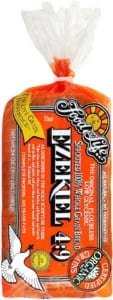
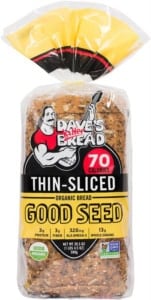
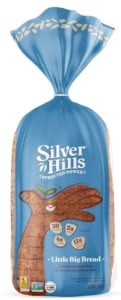
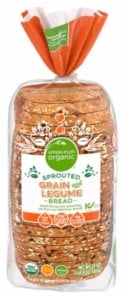
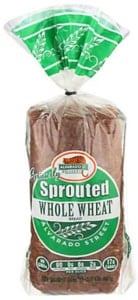
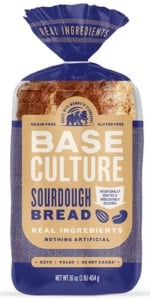
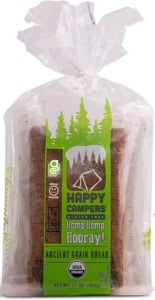
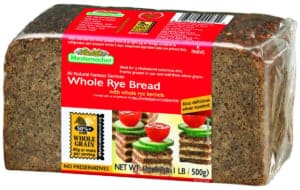
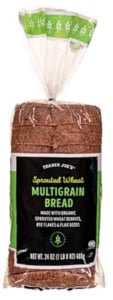
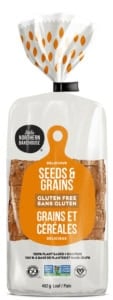
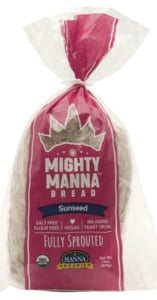
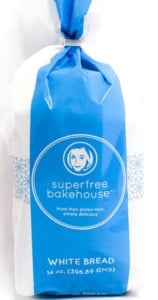
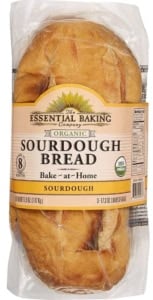
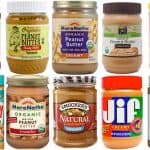
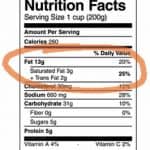
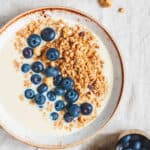

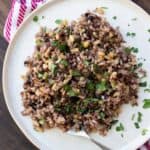






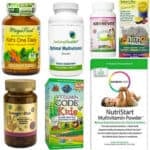
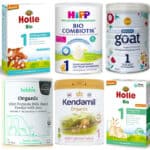

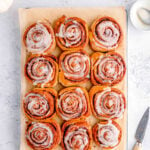
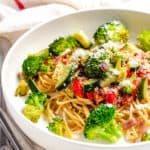
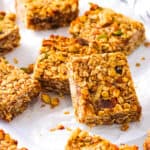


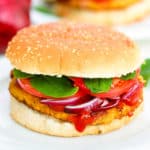
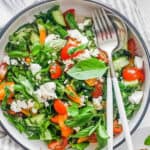

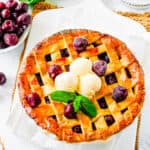
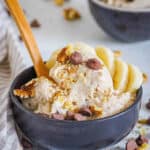

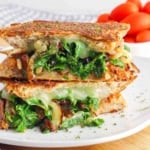
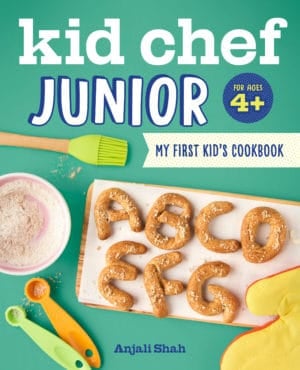

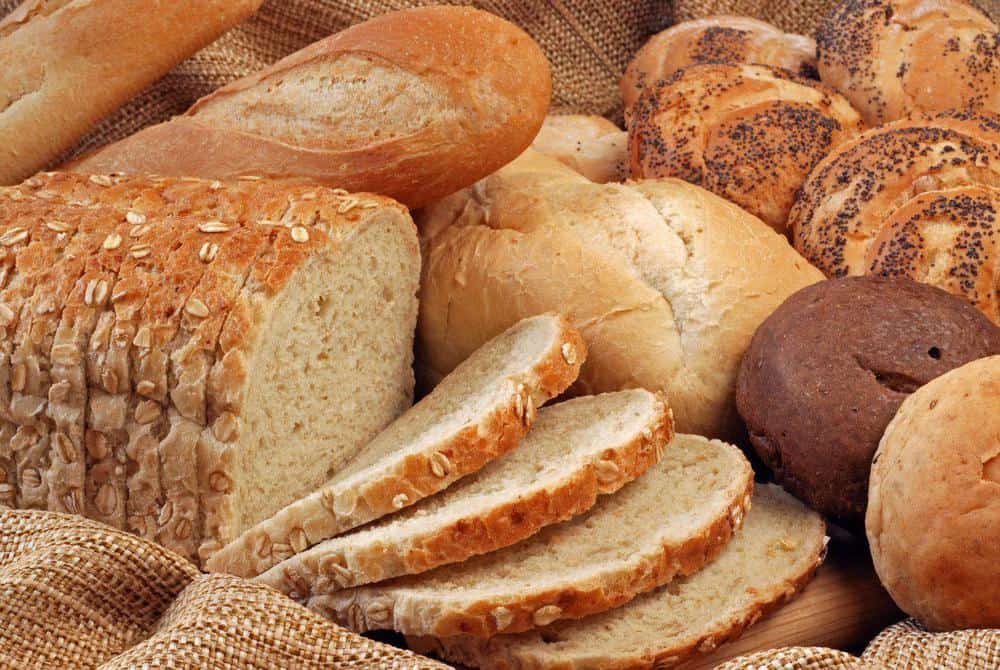
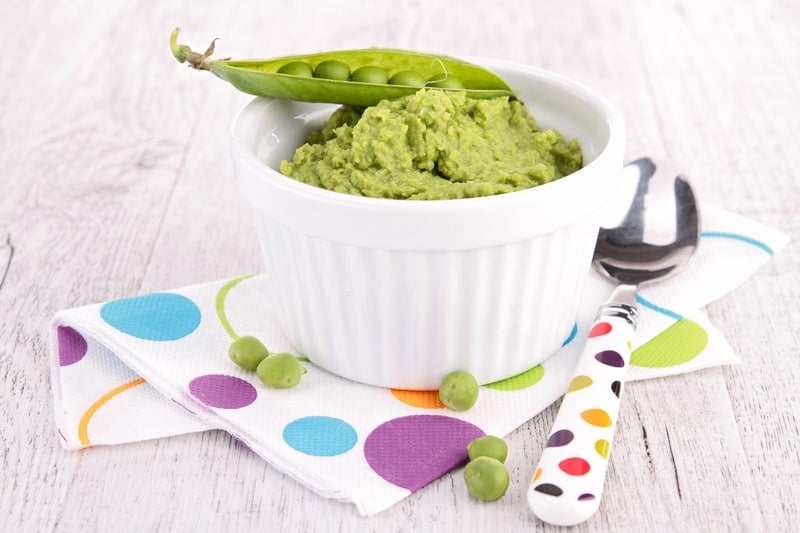
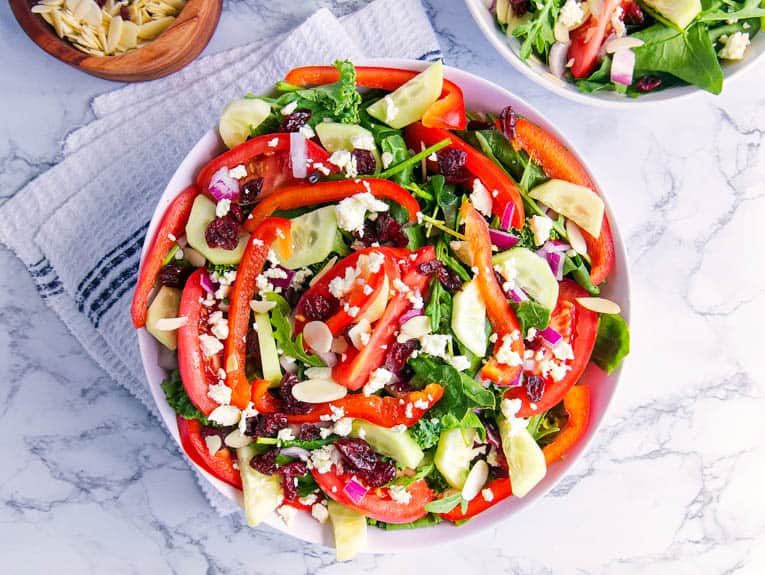



Hi I want a good bread that is like white bread but I don’t like seeing the canola oil used in Daves killer bread. I try to stay away from canola or sunflower oil and of course soybean or vegetable oils. Picky kids don’t like any seeds as well. Any recomendations?
Hi Rebecca! You could try Silver Hills Bakery which has a bunch of different varieties and doesn’t include any vegetable oils like sunflower/canola/etc. Hope that helps!
Any low carb no seed oil breads out there?!
Hi Laura! You can try Base Culture Bread – it’s low carb, and doesn’t include any seed oils (but it does include ground flaxseeds). Hope that helps!
Thank You for this info. I eat Dave’s Killer bread when it’s on sale and Ezekiel at times. Most of the time I just try to go without. I don’t only look at sugar content and carbs but I also look for what kind of oils are used. It’s a nightmare because most store-bought breads contain oils that clog the arteries. Would you consider doing an article on breads that possibly don’t have unhealthy oils? It’s a real challenge!
Hi Kat! Both of those are great options but I totally hear what you’re saying. The omega 6 oils that are included in breads is a challenge! If I do create a post about bread brands that don’t use unhealthy oils, I will let you know! Thanks so much!
Any breads with no seed oils? I can only eat avocado oil and evoo olive oil.
Hi Dave! Ezekiel bread has no seed oils. This is their ingredients list: Organic Sprouted Wheat, Filtered Water, Organic Sprouted Barley, Organic Sprouted Millet, Organic Malted Barley, Organic Sprouted Lentils, Organic Sprouted Soybeans, Organic Sprouted Spelt, Yeast, Organic Wheat Gluten, Sea Salt.
Hi! I was wondering what you thought of Berlin Bakery’s spelt bread? They also have a sprouted version, but it contains honey—so I honestly can’t figure out which would be “healthier”. Thoughts??
Thanks!
Hi Sarah! I’d go with the sprouted version – it looks like even though honey is added, it must be an incredibly small amount because each slice of bread has only 1 gram of added sugar which is totally fine! The sourdough spelt bread is a great option too. Hope that helps!
Thanks so much for your reply! Cheers!
No problem at all! 🙂
Can you please recommend healthy breads for someone who cannot eat anything enriched with folic acid? Thanks.
Hi Pat! Happy Campers Bread is not enriched with folic acid – you can see their ingredients here: https://happycampersgf.com/products/classy-slice?variant=40961861550263
Hi
What about the Mestermacher rye bread?
That’s a great option! It’s not a sprouted grain, but it’s about as close as you can get to the sprouted grain breads without being a sprouted grain bread itself! And it’s organic which is always a plus!
What are your thoughts about Seattle Soughdough Bread?
Hi Shane! I actually don’t know much about that brand unfortunately, but the best quality sourdough are the ones made with aged starters and have a minimal ingredients list. I don’t know what starter Seattle Baking uses for their sourdough, but their ingredients list is longer than I’d like and has more fillers than I’d like. In contrast, Essential Baking Company (also in Seattle) has a high quality organic sourdough with only 4 ingredients! So I’d recommend that one instead!
Do you know of a good sourdough bread that is free of preservatives?
Hi Debroah! I think Trader Joe’s actually has an organic sourdough bread (in their fresh bakery section) that is free of preservatives! I have bought that in the past and it’s great! Also, many local bakeries will make really high quality sourdough breads with 30 year starters, etc. so that is always an option depending on what bakeries are near you! Hope that helps!
Hi Anjali, this is super helpful! What’s your take on Outer Aisle’s Cauliflower Sandwhich Thins? Do you think it would be a healthy option to use this as my sandwhich “bread” – or would it be best to stick with Ezekiel? Thank you!
Hi Lydia! I hadn’t heard of that brand, but looking at the ingredients it looks pretty good! It likely won’t taste like “real” bread — but it can totally be a healthy lower carb / higher protein option for your sandwich bread!
Thank you so much!!
No problem at all! 🙂